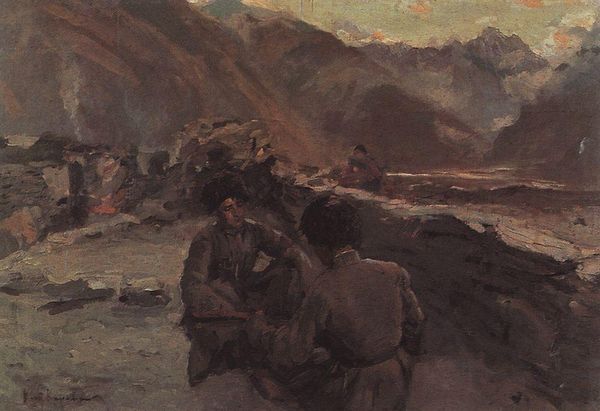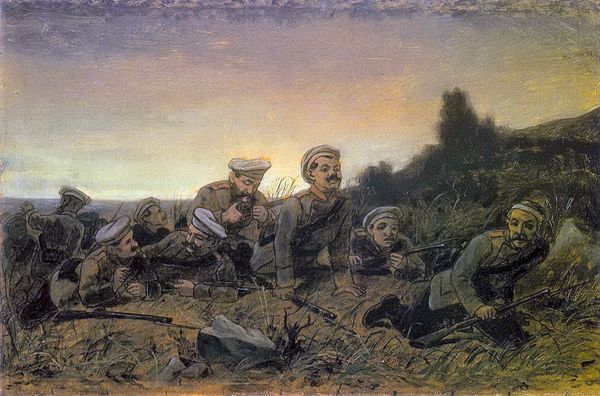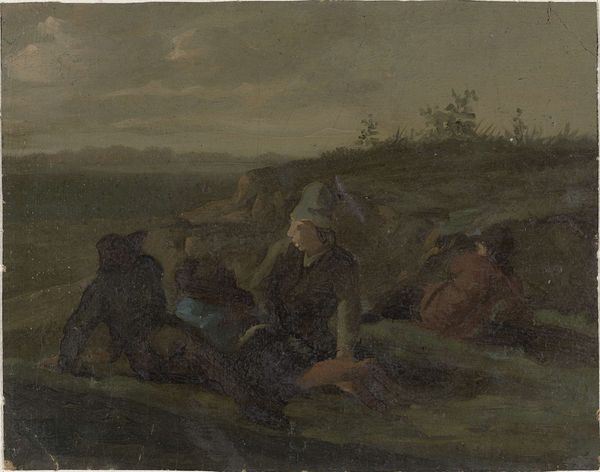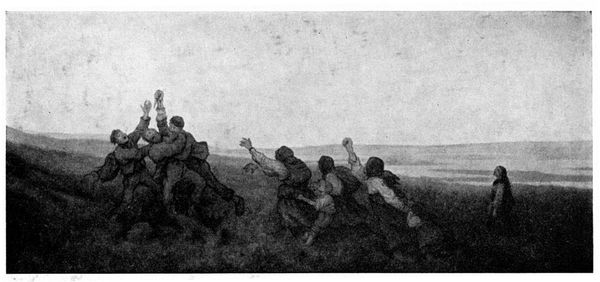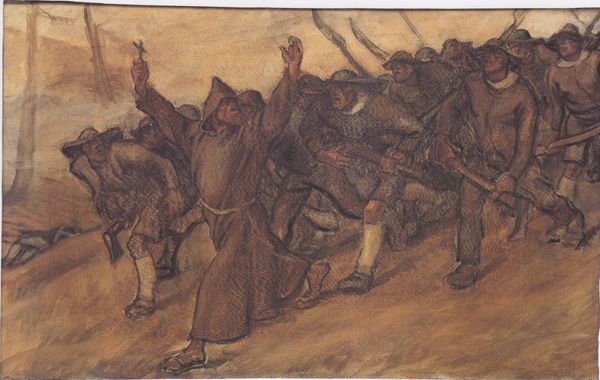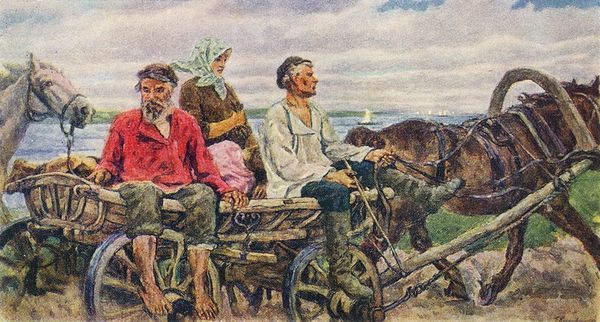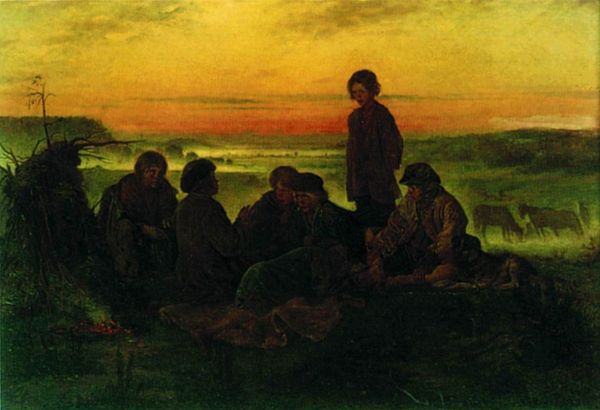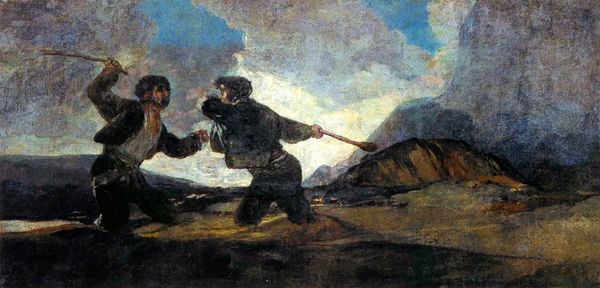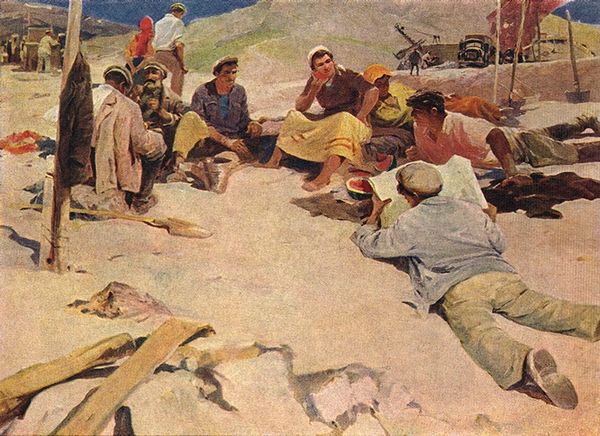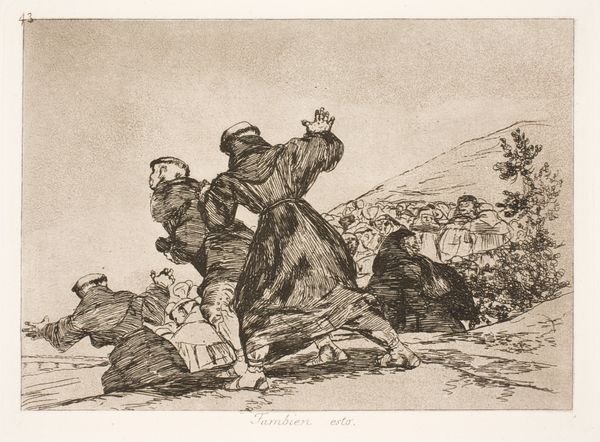
Dimensions: 130 x 196 cm
Copyright: Public domain
Curator: I find myself drawn to the rather somber mood conveyed in Vasily Perov’s 1874 painting, "Scouts at Sevastopol." There's a dampness in the air, a pervasive tension amongst the soldiers, all captured with such understated skill in oil on canvas. Editor: Yes, it certainly captures a specific historical moment. Perov painted this after the Crimean War, which ended in 1856, a conflict deeply entwined with Russia’s identity and imperial ambitions. This work can be viewed as a commentary on the costs of war, and what the soldiers might have had to sacrifice in the name of empire. The composition suggests it is an experience, almost cinematic, rather than just a war painting. Curator: Absolutely, and consider how Perov subtly nods to these themes of empire. The gaze of the central scout is defiant and searching as he strains his neck. He embodies the complicated intersections of duty and maybe disillusionment after such a siege, and as a man placed directly in the midst of violence. What does that violence exact from the self? Editor: And the surrounding landscape reinforces the tension. It’s bleak and rugged, and could act as another 'character' itself. Notice the barren quality to it. But if you look closer, the eye also spots smaller delicate features that add a feeling of unease rather than peace, an interesting formal juxtaposition. We might consider the tradition of Romanticism here: war expressed via sublimity in the sublime vastness, nature as this formidable opposing force, that these soldiers face, too. Curator: That reading gives further complexity and context to the soldiers themselves. They almost become allegorical in the face of Romantic tropes. To read this now through intersectional lens, you wonder what their backgrounds are and what they were made to feel complicit with within the War itself. Are they even afforded that interiority? How might different identities amongst this landscape change perceptions of the soldiers entirely, if, for example, we apply contemporary discussions around intersectional power? Editor: Indeed. Perov, as an artist working in the Realist tradition, does focus our attention on these figures within a recognizable historical context, encouraging reflection on both past and present narratives around conflict, gender, and the legacy of imperial expansion. Curator: Precisely. This painting offers a rich lens through which to examine not just historical events, but how social and power dynamics continue to shape artistic expression and our understanding of it today. It allows us to question and probe deeper than the first glance, expanding a rather silent but powerful moment, outwards to engage further, with our own social commentary on violence and visibility today. Editor: It seems such paintings like “Scouts at Sevastopol” serve as critical reminders that the past remains deeply intertwined with the present. It challenges our accepted understandings of how historical social issues are being re-examined by art practices, new scholarship and theory today.
Comments
No comments
Be the first to comment and join the conversation on the ultimate creative platform.
